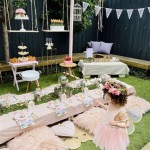How To Decorate a Large Kitchen Island With Seating Area
A large kitchen island with a seating area represents a central hub in many modern homes. It serves not only as a functional workspace for food preparation but also as a gathering place for family and friends. Effectively decorating this space can transform it from a utilitarian surface into a stylish and inviting focal point within the kitchen. This article outlines key considerations and strategies for decorating a large kitchen island with a seating area, emphasizing elements that enhance both aesthetics and functionality.
Before embarking on the decoration process, a thorough assessment of the existing kitchen style is crucial. The island's decoration should complement the overall design theme, whether it is modern, traditional, farmhouse, or eclectic. Consistency in style ensures a cohesive and visually appealing space. Consider the cabinet colors, countertops, backsplash, and flooring when selecting decorative elements for the island.
The size and configuration of the island dictate the types of decorations that are suitable. A longer island may accommodate a variety of decorative items, while a smaller island may require a more minimalist approach. The placement of the seating area also influences decoration choices; for example, decorative elements shouldn't obstruct the comfortable use of the seating.
Prioritize Functionality and Accessibility
Decoration should never compromise the functionality of the kitchen island. Maintaining clear workspaces for food preparation is paramount. Avoid cluttering the countertop with excessive decorative items. Instead, focus on incorporating functional elements that also serve as decor. For instance, a stylish knife block, a utensil holder, or a cookbook stand can add visual interest without hindering usability.
Accessibility is another crucial factor. Ensure that frequently used items, such as spices, oils, or cutting boards, are within easy reach. Decorative containers can be used to store these items in an organized and visually appealing manner. Open shelving on the island can provide both storage and display space for decorative items, but it's essential to keep these shelves tidy and well-organized to prevent a cluttered appearance.
The seating area should also be considered in terms of functionality. Ensure there's enough space for people to sit comfortably without feeling cramped. If the island countertop overhangs to provide legroom, make sure any decorative items placed on the island don't impede this space. Consider adding small storage solutions near the seating area, such as baskets or drawers, to keep items like placemats, napkins, or small toys within easy reach.
Incorporate Decorative Elements That Enhance Visual Appeal
The selection of decorative items should be based on the overall style of the kitchen and the desired aesthetic. Several options can be considered, each adding a unique touch to the island.
Centerpieces: A well-chosen centerpiece can serve as a focal point on the island. Options include floral arrangements, fruit bowls, decorative trays, or sculptural objects. The size of the centerpiece should be proportionate to the size of the island. For larger islands, a more substantial centerpiece is appropriate, while smaller islands may benefit from a smaller, more delicate arrangement. Consider the seasons when selecting centerpiece elements; for example, a pumpkin display may be suitable for fall, while a bouquet of fresh flowers may be perfect for spring.
Lighting: Pendant lights hanging above the island not only provide illumination but also serve as a decorative element. Choose pendant lights that complement the kitchen's style and color scheme. The number of pendant lights should be proportional to the length of the island. Typically, two or three pendant lights are sufficient for a medium-sized island, while larger islands may require more. Consider the height of the ceiling when selecting pendant lights; high ceilings can accommodate longer pendants, while lower ceilings may require shorter, more compact options. The style of the pendant lights can greatly influence the overall aesthetic of the kitchen, from modern minimalist designs to more ornate, traditional styles.
Textiles: Adding textiles, such as runners or placemats, can introduce texture and color to the island. A runner placed along the center of the island can create a visual pathway and add a touch of elegance. Placemats can be used to define individual seating areas and protect the countertop. Choose textiles that are durable and easy to clean, especially if the island is frequently used for food preparation. Consider the color and pattern of the textiles to ensure they complement the overall kitchen decor. Neutral colors can provide a subtle and sophisticated look, while bolder colors and patterns can add a pop of visual interest.
Greenery: Incorporating plants or herbs can bring a touch of nature into the kitchen. Potted herbs can be both decorative and functional, providing fresh ingredients for cooking. Succulents are another low-maintenance option that adds a touch of greenery without requiring frequent watering. Consider the lighting conditions when selecting plants; some plants thrive in bright sunlight, while others prefer shade. The size of the plants should be proportionate to the size of the island. Grouping several small plants together can create a visually appealing display.
Decorative Bowls and Trays: Stylish bowls and trays can be used to hold fruits, vegetables, or other decorative items. Choose bowls and trays that complement the kitchen's style and color scheme. Wooden bowls can add a rustic touch, while glass bowls can create a more modern look. Trays can be used to group together smaller decorative items, creating a cohesive and organized display. Consider the size and shape of the bowls and trays when selecting items to place inside them. Arrange items in a visually appealing manner, paying attention to color and texture.
Consider the Seating Area's Specific Needs
The seating area of the kitchen island needs to be both comfortable and aesthetically pleasing. Bar stools or chairs should be chosen carefully, considering both their style and functionality. The height of the seating should be appropriate for the height of the island countertop.
Seating Style: The style of the bar stools or chairs should complement the overall kitchen design. Modern kitchens may benefit from sleek, minimalist stools, while traditional kitchens may call for more ornate chairs with wooden details. Consider the material of the seating; options include wood, metal, leather, and fabric. Choose materials that are durable and easy to clean. Upholstered seating can provide added comfort, but may require more frequent cleaning.
Seating Arrangement: The arrangement of the seating should be conducive to conversation and interaction. Space the stools or chairs evenly along the island countertop, providing enough space for people to sit comfortably. Consider adding backrests to the seating for added support. If the island is frequently used for dining, ensure there is enough legroom beneath the countertop overhang. Consider the number of people who will typically be using the seating area when determining the number of stools or chairs to purchase.
Accessories for Seating Area: Add accessories that enhance the comfort and functionality of the seating area. Cushions or pillows can add a pop of color and provide added comfort. Placemats or coasters can protect the countertop from spills and scratches. Small plants or decorative items can be placed on the island countertop near the seating area to add a touch of visual interest. Consider adding small storage solutions, such as baskets or drawers, to keep items like placemats, napkins, or small toys within easy reach. Ensure that any accessories added to the seating area do not impede the comfortable use of the seating.
Personal Touches: The decoration of the kitchen island should reflect personal style and preferences. Incorporate items that have sentimental value or that represent personal interests. For example, a collection of cookbooks, a piece of artwork, or a handmade item can add a unique touch to the space. Family photos can also be displayed on the island, creating a warm and inviting atmosphere. Remember to keep personal touches in moderation to prevent cluttering the space.
Decorating a large kitchen island with a seating area requires careful planning and consideration. By prioritizing functionality, incorporating decorative elements that enhance visual appeal, and paying attention to the seating area's specific needs, it is possible to create a stylish and inviting space that serves as the heart of the home.

How To Decorate Your Kitchen Island Like A Pro Decorilla Interior Design

90 Modern Kitchen Island Ideas To Transform Your Home In 2025

How To Design Large Kitchen Islands With Seating

Top Benefits Of A Kitchen Island With Seating Custom Islands

How To Decorate Your Kitchen Island Like A Pro Decorilla Interior Design

How To Design Large Kitchen Islands With Seating

34 Best Kitchen Island Ideas Finally In One Place

Sleek And Functional Kitchen Islands With Seating Decoist

Kitchen Island Size Design Dimensions Guidelines More

Professional Tips For Building A Better Kitchen Island This Old House
Related Posts







